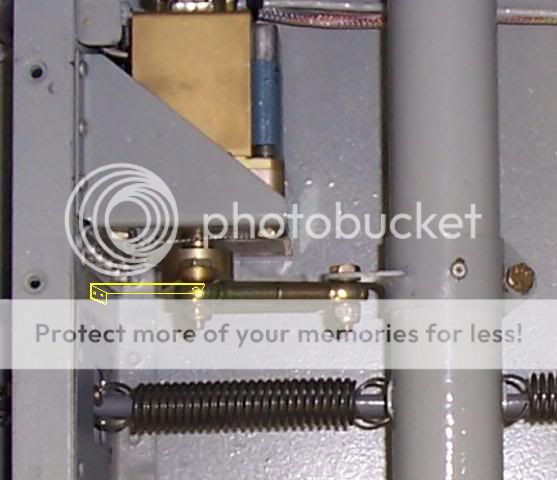My attempt at a fix
This is my unproven and unverified theory of what's happening and what I've done to try and fix the issue.
When I removed the screw and the arm from the servo, there was quite a bit of locktite dried around the head of the shear screw. When I cleaned that off and reinstalled the arm there was now a small amount of play between the shear screw and the arm. In other words, the dried locktite was acting as a shim. So, my theory is that if the screw that holds the arm on is tightened to some unknown torque and the stars all align, the small back and forth play between the arm and the shear screw will eventually loosen the arm's mounting screw.
So, what I tried to do was come up with a way to apply the standard 15 in-lbs of torque to the screw and still have the arm free to rotate if the shear pin fails. So, I designed a small clutch shown in the pictures below. The aluminum button bears against the end of the servo shaft when the screw is tightened. And, the beleville washers apply 40-50 lbs to the nylatron washer. I'm not sure how much better this is over just a screw with a nylon washer but at least you can put a know and repeatable torque on the screw and the load between the arm and the washer is known. I unfortunately sheared my shear screw trying to remove it to test the drag of the clutch. But, the drag seems fine.
Here's a picture of the parts.
From left to right:
1) Nylatron washer (Mcmaster # 91545A250)
2) AN960-416L washer
3-4) Belleville washers (Mcmaster # 9713K61)
5) AN960-416L washer
6) Aluminum button - drawing shown below
7) AN509-8R8 flat head screw
Here's a drawing of the button.
Non of this has been tested, so YMMV, use at your own risk......









